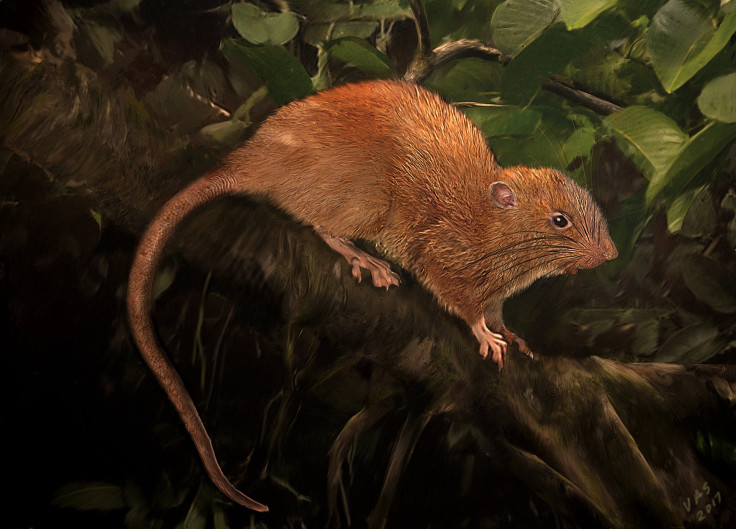Uromys Vika, Giant Tree-Dwelling Rat, Uses Teeth To Crack Open Coconuts

After years of searching, scientists have discovered a new species of rats in the Solomon Islands. Called Uromys vika, it is pretty big at about 18 inches in size, lives in trees and has teeth strong enough to crack coconuts.
Tyrone Lavery, a mammalogist who made the discovery along with John Vendi and Hikuna Judge, first heard about the elusive animal in 2010, when he visited the Melanesian country for the first time and met with locals from Vangunu Island who told him about a large tree-dwelling rat native to the island. The locals called it vika. Lavery looked for the giant rat since he first heard about it but years of searching led to nothing.
Explaining one of the reasons that made the search difficult, Lavery said in a statement Wednesday: “If you’re looking for something that lives on the ground, you’re only looking in two dimensions, left to right and forward and backward. If you’re looking for something that can live in 30-foot-tall trees, then there’s a whole new dimension that you need to search.”

The actual discovery of U. vika, named after the local name for the animal, was almost serendipitous. One of them was seen scurrying out of a tree that had been felled.
“As soon as I examined the specimen, I knew it was something different. There are only eight known species of native rat from the Solomon Islands, and looking at the features on its skull, I could rule out a bunch of species right away,” Lavery said in the statement.
Comparison of DNA from the specimen with genetic material from its relatives on the island and looking at other similar species in museums, Lavery had the evidence he needed to verify that U. vika was indeed a previously unknown rodent species.
The black rats that are commonplace in urban areas in Europe and the United States usually weigh less than half a pound, while U. vika weighs as much as 2.2 pounds. They haven’t been seen cracking coconuts so far (that is something the islanders told Lavery about vika’s behavior), but they do chew circular holes through the shells of nuts to get at the flesh inside.

The Solomon Islands is about a thousand miles northwest of Australia and is biologically isolated. Consequently, over 50 percent of mammals found on the islands that make up the country are not found anywhere else on Earth.
“Vika’s ancestors probably rafted to the island on vegetation, and once they got there, they evolved into this wonderfully new species, nothing like what they came from on the mainland,” Lavery said in the statement.
If you are one of those who have a phobia of rats — a rather common phobia — then you might find some comfort in the fact that these giant rodents are found only in the Solomon Islands. Also, due to the usual factor of human activity — in this case, logging of its rainforest habitat — the animal will soon be listed as critically endangered, Lavery said.
“It’s getting to the stage for this rat that, if we hadn’t discovered it now, it might never have gotten discovered. The area where it was found is one of the only places left with forest that hasn’t been logged,” he added, saying the rat also has cultural significance for the people of Vangunu Island.
A paper announcing the discovery of U. vika is appearing in the Journal of Mammology.
© Copyright IBTimes 2025. All rights reserved.




















